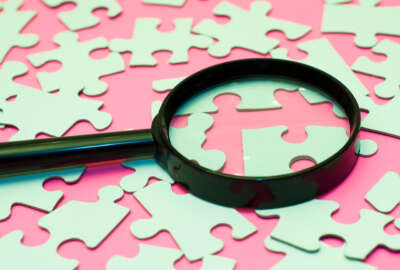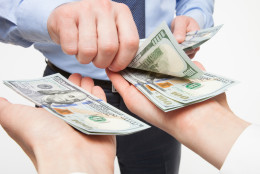
OPM clarifies SES executive order requirements, including pay boost
As deadlines come and go, OPM answered some frequently asked questions about an executive order, signed in 2015, that mandated reforms to the Senior Executive...
The Office of Personnel Management is giving agencies a more complete roadmap to reforming the Senior Executive Service, including pay increases and higher caps on performance award spending. A list of FAQs published by OPM fleshes out the requirements of Executive Order 13714 as agencies are currently in the midst of making these changes.
The order, released in December 2015, mandated a number of reforms to the SES, including streamlining the hiring process, developing a rotational plan, increasing the cap on performance awards and increasing the base pay.
Some of these provisions apply only to SES, while others also affect senior level, scientific and professional positions, and even non-career executives. The first thing OPM’s June 28 document does is clear up which reforms affect which types of executives.

Performance awards and pay adjustments
Two provisions in the executive order that elicited the most praise and excitement when it was first released were the increased cap on awards and pay adjustments. Agencies now are limited to 7.5 percent — up from the current 4.8 percent — aggregate spending on performance awards for SES. OPM said that it would release guidance soon on how the increased awards will work.
Bonuses received in 2017, based on 2016 performance, will be the first to take the new limits into account. OPM said in the FAQs the awards should reflect performance, and that agencies should “allocate additional amounts available for awards in a manner that provides meaningfully greater rewards to top performers.”
In addition, the executive order stated that base pay rate for SES should exceed that of subordinate GS-rated employees, including locality pay. OPM’s document fleshes out those requirements.
Agencies can set pay at whatever they want, within the range of SES rates. This should be taken into account upon hiring. Meanwhile, adjustments to existing employees should be performance-based.
“OPM would not expect to see a pay increase for any career SES member reassigned or transferred due to poor performance,” the FAQs said.
When establishing these rates, OPM said that bonuses to SES employees will not be taken into account.
In addition, these changes in pay rates should not affect any agency’s performance appraisal system.
Hiring
On March 11, OPM issued guidance on examining and improving agencies’ hiring processes for SES. According to the executive order, agencies had 120 days from the date of that guidance to evaluate their current hiring process and determine how to make it more efficient. That deadline is July 9.
OPM plans to change the Qualifications Review Board’s process. In particular, the Executive Core Qualifications narrative currently required will become optional. Agencies will be able to choose to replace it with other materials, such as the QRB Template or Accomplishment of Record, whatever makes sense for the agency and position for which they are hiring.
Additionally, the EO requires agencies that already haven’t developed a succession planning process. to do so. OPM said it will be providing guidance in this summer and encouraged agencies to share templates and best practices in the meantime.
Developmental activities and rotations
The presidential directive mandates at least one developmental activity for SES members each year. OPM defined developmental activity as “any work assignment(s) that provides exposure to different leadership experiences and perspectives to promote personal and professional growth and development.”
OPM’s document offered suggestions as to how this could be accomplished. In addition to the options outlined in a guide published by OPM in 2012, it also suggested agencies avail themselves of programs like the SES Situational Mentoring Program and Federal Coaching Network, which would fulfill the requirement at no cost to the agency.
The order also calls for SES to engage in rotations of at least 120 days to facilitate learning, development and collaboration. OPM defined rotations and offered suggestions for fulfilling this task in guidance released on Jan. 29.
Agencies were required to submit a plan to fulfill this requirement by May 31. Implementation must begin by Oct. 1. The EO set a goal to have 15 percent of SES members governmentwide in rotation each year by 2017.
Implementation
The executive order established a timeline to implement these changes. Hiring improvements, rotations and pay adjustments begin in 2016. The increased cap on performance awards takes effect in 2017. Every other provision in the EO will be rolled out in phases by agency.
Agencies will be required to designate a Senior Accountable Officer responsible for implementing these changes. SAOs will also be responsible for reporting to OPM about agencies’ progress.
OPM said that no additional funding will be supplied to implement these programs.
Copyright © 2025 Federal News Network. All rights reserved. This website is not intended for users located within the European Economic Area.
Daisy Thornton is Federal News Network’s digital managing editor. In addition to her editing responsibilities, she covers federal management, workforce and technology issues. She is also the commentary editor; email her your letters to the editor and pitches for contributed bylines.
Follow @dthorntonWFED





